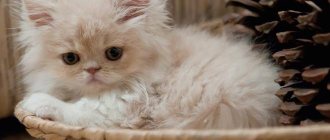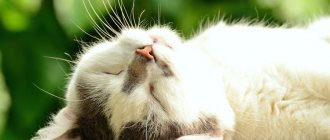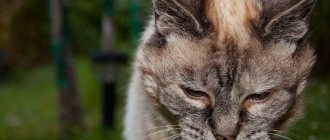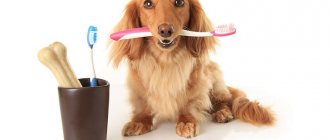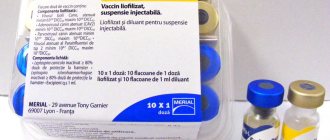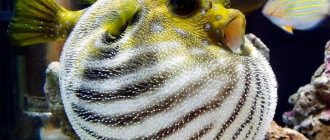Keeping a cat's fur in perfect condition is a troublesome task. Long, capricious fur can quickly become tangled and matted. Mats appear more often in those cats that periodically go outside. They are less common in domestic animals, but are also not excluded. This problem is not divided into breeds and species - every pet can develop tangles. To gently and effectively remove unsightly hairballs, any cat owner should have a cat hair cutter in their grooming arsenal. It is a hybrid of a comb and scissors and provides gentle and safe removal of tangles.
Why are mats dangerous in cats?
The formation of mats in cats is almost inevitable, even with proper care of the animal's fur. They can form in places where it is difficult to notice. Every owner should know that mats can be dangerous to a cat's health.
Even the smallest mat has the ability to grow and become larger. A large accumulation of matted fur prevents oxygen from reaching the skin. Pathogenic microorganisms settle in these places, disrupting blood flow and metabolism in the skin.
Also, in places where mats form, the cat does not have the opportunity to lick the fur, which means that dirt begins to accumulate there. The animal begins to actively itch, which can lead to claws getting stuck in the tangle and injury to the claw itself at its base.
When scratching the skin, dirt from claws and hair accumulation can get into the wound, which leads to inflammation and even blood poisoning in the cat.
If your animal has parasites, then if there are mats, it will be almost impossible to get rid of them.
Harm to the health of the animal from downed, matted wool
To make tangles easier to sort out, dissolve the dirt. To do this, use a spray - this special product is sold at the pet store. Soak the tangles in it and leave for a while. When the wool dries, they can be taken apart by hand.
In addition to the fact that balled fur spoils the appearance of the animal, it poses a threat to the pet’s health. The harm from tangles lies in the development of a number of adverse consequences.
Be sure to read: How to teach a kitten to eat on their own, at what age do they start feeding themselves?
These include:
- the occurrence of dermatological rashes on the skin due to dysfunction of thermoregulation;
- the appearance of various parasites, including fleas, ticks, lichen due to contamination of the skin, bacterial growth;
- the formation of wounds and ulcers as a result of the animal’s attempts to independently free itself from tangles using claws and teeth;
- pain due to excessive skin tension;
- feeling of discomfort and stress in the animal.
The appearance of any of the listed complications due to the formation of balls of matted wool requires immediate elimination of the defect.
What is a webbing cutter?
A classic tangle cutter is similar to a comb, where instead of teeth there are blades, or to a vegetable peeler, where instead of one horizontal blade there are several protected vertical ones. At the same time, the blades are safe and difficult to injure the animal.
The length of the cutting parts varies: the longer the wool, the larger the teeth of the tangle cutter should be. Of course, on the shelves you can find tools of different manufacturers and prices. Since the price of tangle cutters is not the lowest, it is better to choose a good tool that will serve you for a long time.
Terms of use
And lastly, let’s figure out how to use the webbing cutter. The technology for its use is quite simple:
- try to catch the animal in a good mood; it’s good if the cat is half asleep;
- take the animal in your arms, caress it and carefully feel where the tangles accumulate;
- if there is such a possibility, then it is advisable to treat matted wool with a special spray or powder, which facilitates the combing process;
- Using a mat cutter, carefully begin to comb the wool, moving along the mat itself, while the blades should “look” down;
- comb the tangle several times until the matted bun is completely straightened.
Try to pay more attention to the condition of your pet’s coat and the problem of mats will go away. Even the most expensive accessory will cause a slight, but still noticeable feeling of discomfort to your cat. Remember this!
Types of tools
If lumps have already formed on your beloved cat’s fur, and a comb and hands do not help, it’s time to buy a mat cutter. When you go to pet stores, you can find on the shelves four dissimilar and completely different in shape tools. At the same time, they perform different functions, so for high-quality care for your pet you will have to purchase several types.
Horizontal
Externally, this tool looks like a vegetable peeler or a knife for cutting vegetables into small noodles. Its blades are sharp on one side and rounded on the other. This ensures safe contact with the cat's skin and does not injure it.
The horizontal model is the most universal: it is suitable for animals of different breeds and sizes. Even a beginner can easily cope with its use.
Vertical (side)
Similar to a classic comb with long straight or curved teeth. Hooks on the blades not only provide safety, but also perfectly pick up tangles from under the bottom, and cut them off much more efficiently.
This model is suitable for hard-to-reach places and for more professional use.
Electric
A specialized tool with one blade and a built-in motor. It is used to remove lumps from hard-to-reach places: ears, groin area, paws. The blade of the tool is protected by a plastic cover on the outside, which makes it safe to use. To use an electric hair cutter, it is advisable to have a certain skill - to at least once watch how a professional groomer handles it.
teardrop-shaped
This mat cutter is used for cats that have mats in hard-to-reach areas: ears, armpits, groin area or paws.
It has only one blade and is suitable for those animals that get stressed by the sight of grooming accessories. This type is convenient to use to remove small tangles without your pet noticing. However, if the owner is going to use it for the first time, he should be very careful - it is better to practice in an easily accessible area.
Varieties
Essentially, a webbing cutter is a knife. With its help, you can carefully remove a matted clump of fur without causing any inconvenience or pain to your cat.
Manufacturers offer the following types of tools:
- vertical;
- horizontal.
Vertical webbing cutter
Vertical
Outwardly, it resembles a classic comb, since it has one row of long blade teeth. There can be 4 to 12 of them in total. But don't worry - they pose no danger to your pet.
Long and medium teeth are suitable for the following breeds:
- Persian;
- Maine Coon;
- Siberian;
- Somali;
- Burmese;
- Turkish Angora and others.
A short-toothed tool will help remove tangles from short-haired breeds:
- British;
- European;
- Oriental;
- Siamese;
- Scottish;
- British and others.
If the cat does not like to be combed, then you need to take a mat cutter with curved blades.
Horizontal tangle cutter for cats
Horizontal
A horizontal wedge cutter visually resembles a knife for slicing vegetables in the shape of noodles. It has several blades located parallel to each other. Moreover, one edge is sharpened, while the opposite edge is rounded. This design guarantees the safety of the pet device during use.
Like the vertical, horizontal webbing cutter can have 4 to 12 blades of different lengths. The tool is suitable for removing mats from cats of almost all breeds.
Colt cutters are also available mechanical and electric.
Mechanical
Mechanical devices do not have an electric drive. You perform all movements of the instrument yourself. These are both rounding and forward movements. As a rule, such a gadget is perfect for home use, provided you follow the rules for its use.
Battery-powered electric
Electric
Electric braid cutters are powered by batteries—usually AA batteries—and the knives are driven by pressing a button on the handle body. A similar, more complex gadget than the one described above is intended primarily for professional groomers. Although at the same time, even professionals most often prefer a mechanical welt cutter.
Small but convenient webbing cutter Drop
A drop
If necessary, you can buy a welt cutter for narrow applications. It is teardrop-shaped and is used for hard-to-reach areas, such as cats' ears and paws. It is a plastic hook for capturing a tuft of wool and a sharp blade for cutting it, as in the photo. Some skill is required to use this tool.
How not to make mistakes when buying
The hair cutter must be very carefully selected to suit the parameters of your animal. The required number of teeth will depend on the size of the cat, and the length of the blades will depend on the length of the fur. Of course, it is ideal to have at least two different tangle cutters in your groomer's bag - a large one for fur and a special one for hard-to-reach places. This set will allow you to provide your cat with complete and almost professional care at home.
When purchasing, you should pay special attention to the quality of materials and ergonomics of the tool:
- the handle of the tool is rubberized, non-slip;
- the handle of the tangle cutter fits comfortably in the hand;
- blades are made of high quality steel;
- the blades do not bend too easily;
- the cutting part is quite sharp;
- Pay special attention to where the handle is attached.
Poor-quality shape and materials of the handle will cause inconvenience in using the tool, and bad blades can harm the cat. Blades that are not sharp enough will tear the fur rather than cut it, causing pain to the animal.
Tool type
Based on user reviews, we can say for sure that the horizontal webbing cutter is the most versatile. It is suitable for all breeds and all coat lengths. But such a device costs a little more than a standard side chain cutter.
Other types are designed for specific areas of the animal’s body: the stomach, places behind the ears, armpits and groin, the lower part of the paws, their folds, etc. Such tangle cutters are suitable for show animals.
An electric hair cutter is an excellent device for those who keep several long-haired cats or do grooming. It is not advisable to purchase such a tool for the sake of one short-haired individual.
Size and number of teeth
Vertical webbing cutters have from four to twelve blades. The largest tool is designed for dogs of especially large breeds, and for cats a tool with an average of 4-9 blades is suitable. If you have not used such a device before, then take a knot cutter not with straight teeth, but with rounded teeth - they are safer.
The length of the teeth must be calculated based on the length and thickness of the pet’s fur. The longer the hair, the more teeth. Arm yourself with a photo of your cat and go to a pet store or veterinary pharmacy - a consultant will definitely help you with your choice.
Self-removal
You can eliminate cat tangles yourself at home if the situation is not advanced. An inexperienced owner is advised not to deal with tangles, but to entrust the procedure to a professional. A frightened cat often breaks out, but may not be able to do so.
You can trim the tangles with nail scissors or a hair clipper. Small and loose hairballs can be easily untangled using a comb and special veterinary products to make combing easier. A dense ball of wool will have to be broken up with a tangle cutter.
How to use a cat hair cutter
A modern and popular device for breaking hairballs in long-haired pets is called a mat cutter.
Externally, the tangle cutter resembles a comb, but is equipped not with teeth, but with thin steel blades (4-12 pieces). The tool is completely safe for animals. When choosing a product, it is necessary to take into account the breed characteristics of the coat: the longer the hair, the longer the blade should be.
The quality of a mat cutter for cats is determined by the following parameters:
- the number of blades (for breeds prone to forming lumps, you should choose a hair cutter with the maximum number of sharp teeth);
- the length of the blades (in advanced cases, when large trichomes appear, you will have to purchase a product with long teeth);
- material (a high-quality webbing cutter is equipped with blades made of high-strength steel);
- comfort of the handle (the shape should be optimal for gripping and holding, the surface should be rubber to prevent slipping).
For a cat with large trichomes, a vertical mat cutter is suitable. To combat regularly appearing small lumps, a horizontal product resembling a vegetable peeler is convenient. In a horizontal device, the rounded blades are directed parallel to the handle; they are safe to use, since they are sharp on one edge and blunt on the opposite.
It is difficult to remove trichomes that have formed in hard-to-reach areas: near the ears, in the groin and axillary area, on the paws with a horizontal and vertical wedge cutter. A teardrop-shaped product is required, characterized by its small size and rounded shape, equipped with a single blade.
It is important to use the purchased tangle cutter correctly without causing harm to the cat. Basic rules for using the product:
- Before the procedure, calm the cat, treat it with a treat, and caress it.
- To be on the safe side, ask a household member to hold your pet while removing lumps.
- Comb out clumps in the direction of hair growth.
- Do not press the blades on the skin, try not to cause injury.
- To make it easier to comb out dense lumps that have formed, use a softening spray available at a veterinary store.
A chain cutter is a tool used as a last resort. It is unacceptable to use the product regularly: it can seriously damage your cat’s coat. Therefore, it is advisable to prevent the appearance of tangles.
Combing tangles
You should not rush to grab the mat cutter; you should try to comb out the mat. If the lump is small and loose, it is not difficult to rid your pet’s fur of excess weight. For the procedure, it is necessary to use not a human, but a special comb for animals.
- Wait for the cat to be in a calm and peaceful mood.
- Place the animal on the pad, being careful not to scare it. The mat must be visible.
- Pet the cat and talk kindly.
- Place your palm on the tangle, and with your fingers firmly grasp the tangled strand at the base so that the animal does not experience pain during the procedure.
- Using smooth, leisurely, short movements, move the comb over the tangle, gradually breaking it into several parts.
- Comb each part in the same way.
- Finish with a standard combing.
To easily remove large mats from a cat, you can use veterinary hair softeners - powder or spray.
Cutting out tangles
Trimming is the easiest way to get rid of large mats from a cat. But you should not rush to cut off the tangles, especially if the cat is a show cat. There is a high probability that the hair will change after shearing; the grown hairs will have a different shade or structure. Therefore, before cutting, you should try to comb out the tangles.
A cat's mats should not be cut off completely, but cut lengthwise with nail scissors. You should act carefully, trying not to injure your pet's skin. A lump divided in half is easier to comb out. It is unacceptable to cut it out completely: there will be a bald spot.
https://youtube.com/watch?v=GeTZKL-RMsg%3F
When and how to use a cat hair cutter
To prevent the fur from rolling into clumps, it is necessary to pay special attention to combing during the molting period - in autumn and spring. At this time, it is worth combing the undercoat more often and not allowing fluff to accumulate and thicken. It is recommended to use a furminator - a device for better removal of fallen hairs.
Procedure for removing tangles
In order for an adult cat to accept any hygiene procedures with pleasure, it must be taught to do so from a very early age. Over time, the pet understands that the procedure is safe for him and is easy to comb.
Basic tips to make it easier for your cat to deal with the removal of mats:
- do not proceed to the procedure immediately after the cat has eaten or actively played;
- do not try to comb an aggressive animal;
- It is desirable that the cat is relaxed, calm or half asleep;
- It will be better if the combing is performed by the family member whom the cat trusts most.
Before removing the tangle, try to untangle it by hand - sometimes this works. This way the wool is least susceptible to damage. If the manual method does not help, you need to take up the tangle cutter:
- Place your cat on a hard, stable surface so she feels safe.
- Work only on dry fur: do not bathe the cat or wet the mats before the procedure;
- It is important that the owner conveys absolute calm to the cat.
- It is useful to treat the fur with a special powder for easy combing - cat cosmetics are sold in pet stores.
- Removal movements should be smooth and soft - do not pull the fur or cause pain to the animal.
- Move from the base to the tip of the hair.
- Do not apply pressure, do not use force.
- If there are too many tangles, divide the procedure into several short sessions.
Manufacturers often include instructions with the tools on how to use the tangle cutter, although this is intuitive. The procedure itself is not much different from regular combing. It is necessary to start moving in the direction of hair growth. Under no circumstances should you use the tool in the opposite or transverse direction. The teeth should go strictly from the roots of the hairs to the tips.
For effective removal, it is worth alternating combing movements over and under the tangle. You need to try to insert the cloves between the lump and the skin and cut through the wool in this place, gradually separating the tangle.
When not to use a webbing cutter
A mat cutter is a tool for removing problematic hairballs, and it should only be used when a comb and other accessories cannot cope with the problem. It is not suitable for normal daily grooming as it can damage its structure with sharp blades.
If the owner has insufficient experience in using this accessory, it can damage the thin and delicate skin of his pet. Therefore, a tangle cutter cannot be used without prior preparation, at least morally.
There are no special contraindications to the use of a tangle cutter, but it is worth considering the general health of the pet. There should be no lesions or other injuries on his skin, as well as visible symptoms of diseases.
Cautions
It is necessary to remember that a tangle cutter is still an extreme means for caring for cat fur and is used in cases where it is already too neglected, and a regular comb is powerless. By cutting through the stray areas with sharp blades, you can damage the structure of the coat, and it will have to be restored over a long period of time using special expensive means.
Keep your cat's fur in order and avoid tangles.
Therefore, you should not get too carried away with tangle cutters - they are needed only in emergency situations, to which you may well not bring the condition of your pet’s fur.
Don't forget: a cat's skin is thin, like tissue paper, and it is very easy to hurt. If you do not have enough experience in using a tangle cutter, choose a tool with curved, hook-shaped teeth to begin with to minimize the risk of injury.
How to care for a mat cutter
A cat hair cutter, like any tool, requires special care. Before use, the blades must be disinfected with an alcohol-containing liquid or boiling water. This must be done carefully so as not to have such a harsh impact on the material from which the body is made. This is usually plastic and can be melted by hot water.
After the procedure, the tangle cutter is cleaned of any remaining wool and put into a case, where it is stored until the next use.
Horizontal
The leader among vertical tools is the German brand, which produces numerous accessories for pets necessary to ensure the health and longevity of cats. The instrument is made in traditional colors of metal and plastic. All materials meet standards and are environmentally friendly. The length of the teeth, which are responsible for unraveling the hairs, is 1 cm. Experts also did not forget about the rubber inserts, since they ensure the safety of the animal.
Thanks to well-sharpened teeth, the tool easily copes with tangles. But due to its short length, only small specimens can easily be used. Designed for daily use as a comb, so additional combing with a furminator is not necessary. The latter takes care of not only the fur, but also the undercoat of animals. The ergonomic handle is responsible for ease of use. It does not slip in the groomer's palm, as it is additionally rubberized. The model is universal: it can be used for different types of coat and even dogs. Specialists managed to create an excellent tool that allows you to prevent tangles and cut off only those that have formed, without causing discomfort to the animal.
In second place was a tool designed for everyday combing of cats with any type of fur. The versatility of the comb is also evidenced by the fact that it can be used to maintain the beauty of the coat of dogs. The tool copes well with old wool and removes dirt. A product has been developed for combing. It copes poorly with tangles due to the small size of the cloves.
The latter are made of stainless steel. To achieve the best result when using, combing begins from the ends, moving towards the roots of the coat. After the procedure, the cat looks well-groomed. The wool acquires an intense shine, becomes soft and silky to the touch. An ergonomic handle with anti-slip rubber inserts provides a secure grip. The handle itself is made of environmentally friendly plastic that meets European compliance standards.
The third position belongs to the product of experts who have a simple task: to help people and their pets spend time together. The purpose of the company is to satisfy the needs of the latter. And the latter requires a holistic approach to the production of goods for them. The effort put in can be seen in the GiGwi brand welt cutter. Experts began work on its production by researching combinations of a number of materials. For preparation, the “composition” of metal, plastic and rubber proved to be the best.
The first material guarantees strength and durability. The teeth are made in an unusual way so that when combing they do not harm the animal’s skin, and at the same time effectively separate the hairs, preventing them from becoming tangled. During the hygienic procedure, the GiGwi comb manages to remove dirt and old hair, which often provokes the formation of tangles by getting tangled with new hair. To achieve a better result, they comb against the grain, which is not to the liking of all cats. Carry out the hygienic procedure in a calm environment. After processing, shreds of dead fluff are removed with a regular slicker.
Plastic and rubber are used in the production of the handle. The first material ensures the strength of the handle and durability. And to make the comb easy to use and not slip out of the palm, experts made rubber inserts. The tool is easy to hold in your hand thanks to its ergonomic design. The instrument practically takes the shape of the palm. Grooming salons cannot do without such a hygiene tool. The simplicity of the design allows you to resort to its help at home.
Popular articles Ural Rex (photo): Curly charm with an unusual appearance
Selecting hygienic instruments requires care and responsibility. If the nuances are taken into account, it will provide high-quality, painless and almost imperceptible removal of tangles, and will give the animal a healthy shiny coat and sensitive skin.
Source
Contraindications
Warning: The mat cutter is not intended for breeds with short hair. The reason is simple - their coat is small, it does not mat and does not form “balls” on the body (Doberman, Boxer, Bull Terrier, etc.). Also, the product is not suitable for coarse wool, since trimming is carried out with a special tool (Dachshund, Jack Russell Terrier, Jagdterrier, etc.). The product is not suitable for breeds with lamellar coats (Puli).
The use of a tangle cutter is not recommended if your pet has skin diseases, wounds or scratches. This can cause further damage and pain to the dog.
The product must not be used on wet wool. Moisture has a negative effect on the blades and can damage them. A damaged hair cutter cannot be used because it becomes dull and is unable to untangle matted hairs.
Combing a dog using a special electric tool
Recommendations from experts
Animal groomers and felinologists - breeders do not advise neglecting the procedures for caring for the coat of the ward, especially if the pet belongs to long-haired breeds. Long hair is more prone to tangling than short hair. This means that lack of brushing can cause many tangles to appear throughout the body. Tangles of dense texture no longer lend themselves to “gentle” methods, and the only way to get rid of them is to comb them with a tangle cutter or cut them out with scissors. This can negatively affect the furry cat's appearance.
What are the preventive measures?
Owners who take proper care of their pet will not need a cat tangle cutter or knowledge of how to use it. The main thing that needs to be done regularly is to comb your pet. This procedure must be carried out at least weekly. Some breeds require daily grooming. Owners of long-haired cats should accustom their pets to regular brushing from childhood. This will help avoid many problems. A pet accustomed to such procedures will not break out and behave aggressively. Therefore, caring for his coat will be easy.
A good preventative measure will also be a high-quality shampoo-conditioner, which prevents the hair from tangling and makes combing easier. You can find a good shampoo by studying reviews from owners of long-haired cats.
In summer, the animal can be taken to a grooming salon for a haircut. This will temporarily relieve the owner from problems with long hair. Gourmets can offer very original and individual haircuts for each pet (see video).
Another important nuance in preventing mats is maintaining the correct diet for your pet. The pet's diet must be balanced and contain all the necessary substances in sufficient quantities.

